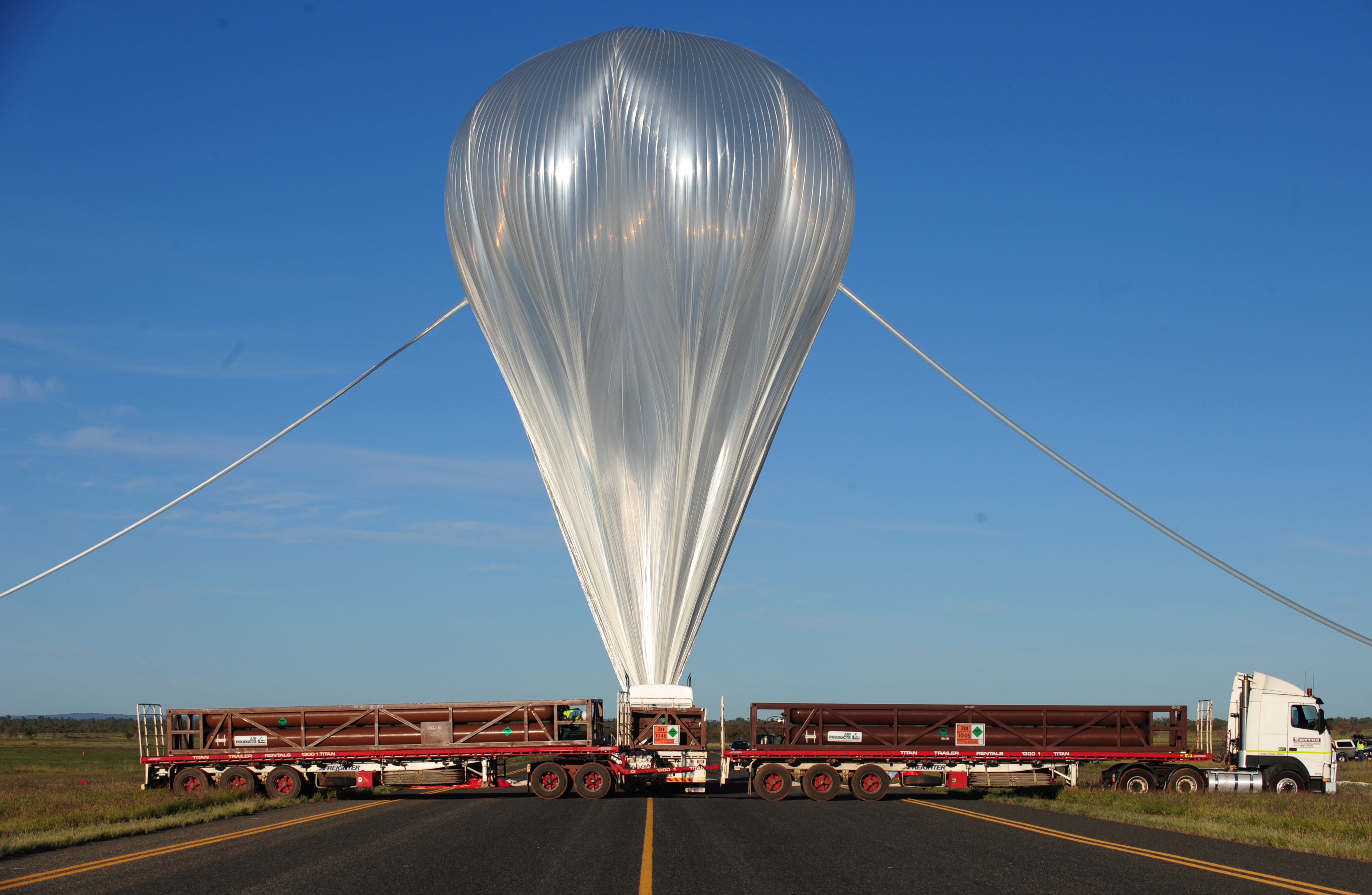Create a free profile to get unlimited access to exclusive videos, sweepstakes, and more!
Hot air balloons may be the ticket to future satellite rocket launches (no, really)

Sometimes the lowest-tech solutions can trump the most far-out ones. In a potentially inspired move (if it works), a Purdue University student project to leap the costly obstacles of putting small satellites into orbit has turned into a full-fledged company, one with the goal of launching its first real-life mission next year — not by taking off from Earth, but by firing up the ignition from 60,000 feet in the sky.
Tech startup Leo Aerospace hit the TechCrunch Disrupt Startup Battlefield event this week in San Francisco to present its new high-altitude launch system, a blend of seemingly archaic flight tech with cutting-edge engineering. The system relies on massive hot air balloons (and no, not the creepy red kind) to do the dirty work of schlepping an unfired rocket through its first leg of the journey past the lower atmosphere, where breaking the confines of gravity becomes much easier and more fuel-efficient than pushing through the most air-dense part of the invisible gas sheath that blankets the planet.
Having a rocket use a balloon as its launch pad may seem like a physics-defying recipe for a giant, fiery mess at first glance. But Leo co-founder Dane Rudy and his peers have been at this a while, and a test launch slated for 2020 should help demonstrate whether the concept is repeatable and cost-efficient — and, more importantly, that it actually works.
Here’s Rudy in his Purdue student days, explaining the basics of the idea:
Via TechCrunch, Rudy said at this week’s event that his company is evolving a concept that dates back as far as the early space age.“We found this really elegant solution that was actually tested in a rudimentary way in the ‘50s by the Air Force, which is launching rockets from an aerostat — a balloon,” he said. “It actually worked really well for what it was designed for. The issue they ran into was that the U.S. shifted toward sending people to the Moon — so there just wasn’t a need for that technology in the Apollo program. But the rise in small satellites has created a huge demand tailored to these capabilities.”
Those early tests involved the Air Force destroying the balloon by having the rocket shoot straight through it, in a vertical position, every time it was tried. But the new effort focuses on an angled trajectory that would make the balloons reusable — a big component of keeping the cost manageable. A series of 2018 tests without a payload proved the theory was sound, and if next year’s payload test is successful, hot-air balloon launches could become a key way to lower the cost of entry for the dozens, if not hundreds, of smaller companies that seek to deploy micro-satellites for a variety of uses.
Leo explains on its website that high-altitude balloon launches can cut “energy requirements to orbit by over 10% and the overall size of the rocket by more than 50%,” while carrying a payload of up to 3,500 kg. The system is designed to fit inside a standard shipping container for go-anywhere mobility, in keeping with Leo’s target for a “zero fixed-site launch infrastructure” that can deploy the system anywhere in the world.
It’s a wild-sounding idea, but there’s some sound science behind it. We’ll be watching the skies (okay, probably just the internet) to see when Leo’s first space launch — which still hasn’t been given a firm date — takes off sometime next year.














